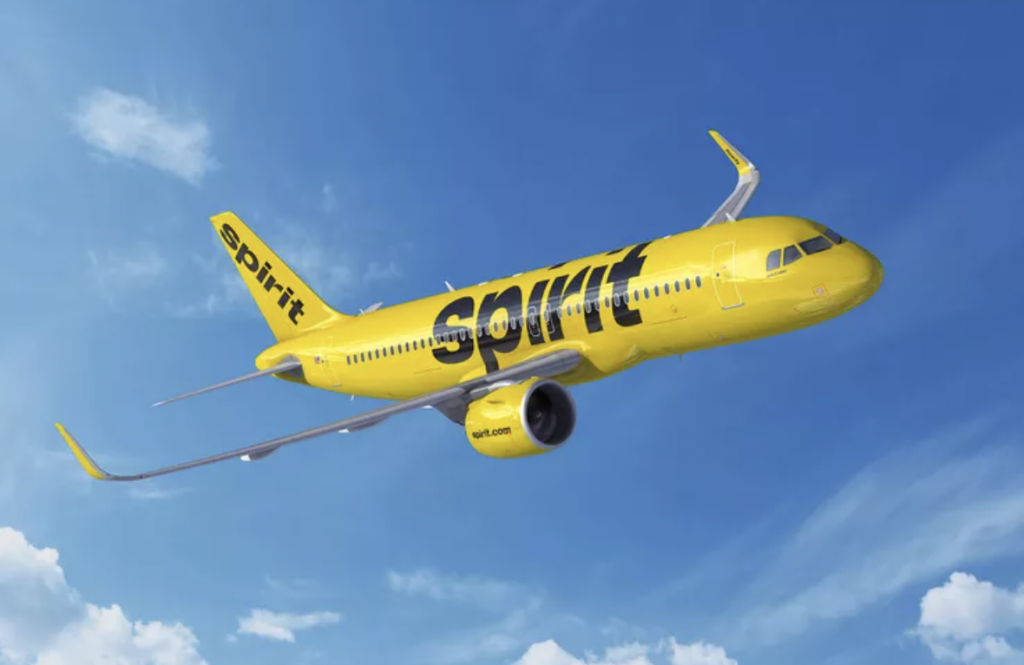I see this question posted regularly on social media: “I’m thinking of flying Spirit. Are Spirit really that bad?” My answer is always this: “It entirely depends on your expectations. If are aware of the caveats, then it can be a great, economical way to fly. If you aren’t, then you might encounter several unpleasant surprises along your journey.” If you’re considering flying Sprit for the first time, then here’s what you need to know to make the most of flying on Spirit, or other ultra low cost carriers in the U.S., such as Frontier or Allegiant.
The base fares are low but they make up the difference in fees.
Ultra low cost carriers offer ultra low cost fares to get you to click on that “Book Now” button, but they also charge a fee for almost everything, and these fees often add up to the point where the total cost of your flight will be comparable to, or even greater than, a traditional legacy airline. One of the biggest mistakes average consumers make is not being aware of these fees and how to minimise or avoid them. Any positive feelings from finding a great deal on a flight will disappear when you show up to the airport and have to pay about $100 for your carry-on! You may not need or want to avoid paying every fee on an ultra low cost carrier, but you should definitely determine what fees you will pay and add them to the cost of your airfare as you’re shopping for flights. Let’s take a look at some of the most common fees you’ll need to consider.
Baggage fees & reduced allowances.
Almost every domestic U.S. airline are charging fees for checked bags, but many don’t realise that ultra low cost carriers charge for carry-on bags as well. On Spirit, you can bring one “personal item”, such as a purse or small backpack, at no charge if it will fit under the seat in front of you. Larger carry-ons that go in the overhead lockers incur a fee. And whilst checked baggage fees may sometimes be comparable between Spirit and the legacy airlines, ultra low cost carriers also tend to have smaller allowances. So whilst your 50 lb checked bag might be fine on mainline carriers, you’re limited to just 40 lbs on Spirit before you have to pay extra for an overweight bag. And, the dimensions for what qualifies as a “personal item” versus a “carry-on”, or a regular checked bag vs an oversize checked bag, are often smaller than on full service airlines, so be sure to check the policies of your specific carrier in advance.
Another thing to keep in mind is that the fees for carry-on and checked bags will increase as you get closer to your flight. It will always be cheapest to pay at the same time you book your ticket. Then, it will cost a few dollars more to pay after booking, but before online check-in. Paying for bags during online check-in will cost you a few more dollars, and then it will be even more expensive to pay at the airport ticket counter. Finally, if you make it all the way to the gate and realise you need to pay for a bag, then that’s where it’s the most expensive–often about $100 per bag! When it comes to bags, planning ahead will help keep this cost to a minimum.
Seat Assignment Fees
Fees for being able to choose your seat are commonplace across most airlines these days, but for those who don’t travel often, who typically purchase higher fares on full service airlines that include the ability to choose your seat for free, or who have status on other airlines that give them access to complimentary seat selection, these fees can still come as a surprise. However, there can be a cost savings benefit here for those willing to gamble on a 2 out of 3 chance of avoiding a middle seat being automatically assigned by the airline. And, often times, if you do find yourself in a middle seat, then you’ll get one last chance to pay for an aisle or window as you check in online.
Print Your Own Boarding Pass
(Or Use Your Mobile Device)
For frequent travellers, it’s second nature to have a mobile boarding pass ready on our phones. (I can’t remember the last time I used a printed boarding pass.) However, infrequent or “old school” travellers may still rely on printing their boarding pass at the airport counter. So, warn your parents!! This can be a costly mistake on a low cost airline. Spirit will charge you $25 for each boarding pass printed at their check-in desks, or $2 each at an airport kiosk. So, if you’re one of those people who feel naked without a paper boarding pass, then print yours at home (or get over it and use the app, which is free).
Other Additional Costs
There are plenty of other things you can pay for, such as in-flight food and beverages, on Spirit and other low cost airlines. However, the above fees are the ones that tend to surprise passengers the most. Do your research, plan ahead, and set appropriate expectations. Once you know how, flying on Spirit can actually be comparably unpleasant to flying a full service airline. And, if you do manage to save yourself a few dollars in the process, then you just might be able to fly Spirit without hating yourself.
- A Pilot Episode – Planning Thanksgiving Travel / Vancouver Trip Report / The Value of Redemptions - 30 November 2024
- Twenty Years Ago, Concorde Flew Passengers At Twice The Speed Of Sound. See What It Was Like To Go Supersonic! - 8 September 2023
- You Can Request a Refund of Your Passport Expedite Fees - 19 August 2023

